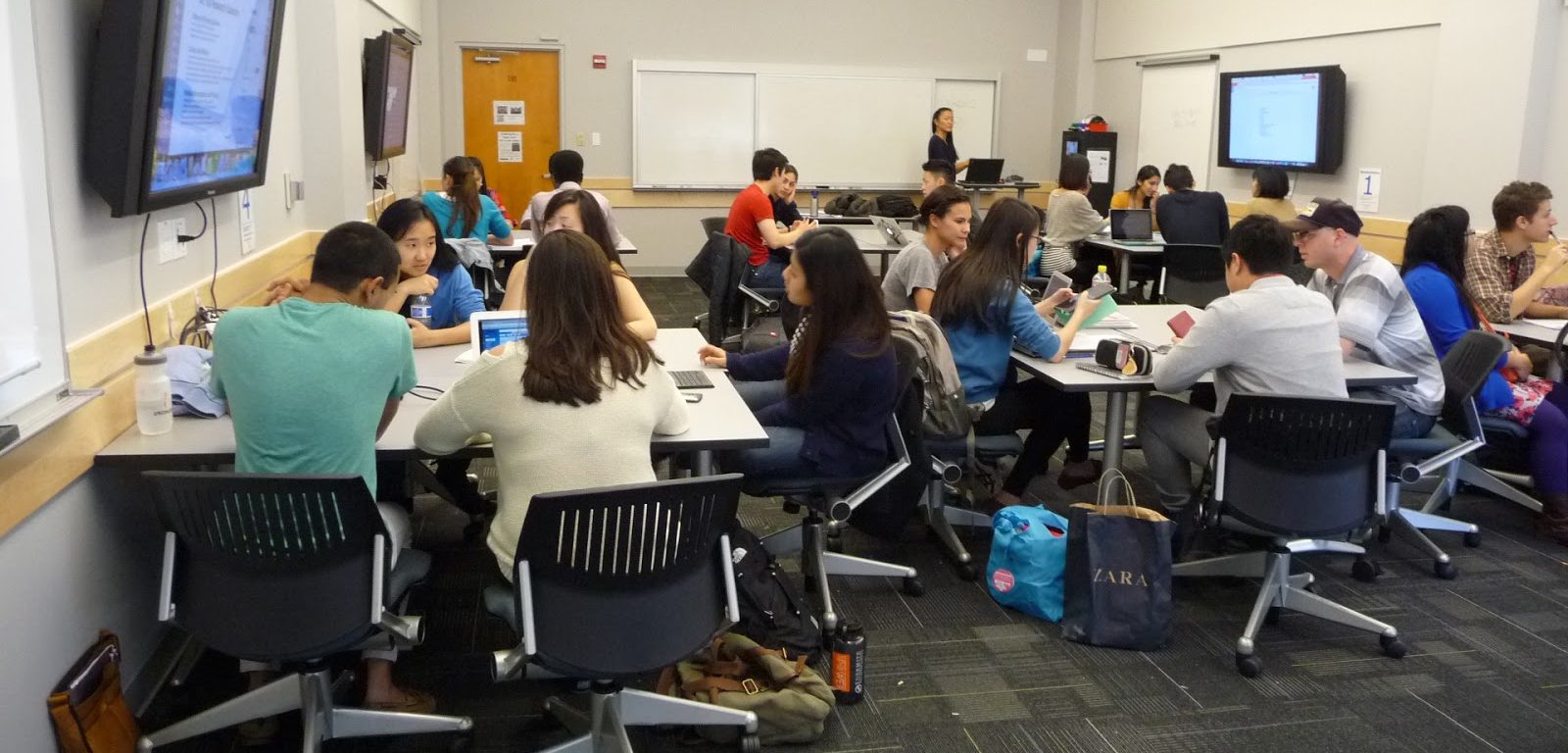What is Active Learning?
You may have been hearing us talk a lot more about Active Learning lately in regards to our upcoming Teaching with Technology Forum and other classroom spaces on campus. The term Active Learning may sound a bit alarming or even chaotic, but many of our faculty are already practicing these techniques in their classes. One of the most commonly used definitions of Active Learning is “instructional activities involving students in doing things and thinking about what they are doing” (Bonwell & Eison, 1991, p. 2). Active Learning strategies introduce student activity into the lecture and promote student engagement through collaborative learning, cooperative learning, and problem-based learning.
What is an Active Learning Classroom (ALC)?
An ALC is a student focused room with enhanced technology that supports the pedagogy behind Active Learning. Often these rooms allow for a merging of lecturing, group work, and hands-on activities. Swarthmore has been experimenting with more flexible furniture and added wireless capabilities in some of our classrooms so we feel it’s important that we better support our faculty by researching and providing more outreach on these types of spaces.
Why Is Active Learning Important?
There is some significant research dating back almost 30 years that suggest Active Learning strategies encourage student engagement and improve short-term and long-term recall of information. Although there are many other factors that go into student learning outcomes some well noted Active Learning impacts on student success include:
- Increased class attendance (typically > 90%)
- Improved student performance when instructors move to active, student-centered teaching methods
- Increased conceptual understanding when compared to lecture/laboratory classes
- Drastically reduced failure rates, especially for women and minorities
- Provided opportunities to strengthen student-faculty relationships
- Provided opportunities that strengthen student-to-student relationships, which benefits collaborative project outcomes Were found by students to be effective for teamwork and collaborative projects
- Encouraged discussion by helping students feel active and engaged
- Perceived positively by both students and instructors
Getting Started with Active Learning
Using Active Learning techniques does not mean you need enhanced technology or mobile furniture. You could start off by using some low barrier strategies to get you started. Try starting off small by using the “bookend” method:
- Begin with an activity
- Give a small lecture
- End with an activity
Example Activity Methods to Get You Started
Think pair share: Students think independently about the question that has been posed, forming ideas of their own.Then they are grouped in pairs to discuss their thoughts. After which the pairs share their ideas with a larger group, such as the whole class.
Jigsaw: Divide students into small groups. Each member of the group is assigned a portion of an assignment or research project. Each member must research the material pertaining to their section of the project and be prepared to discuss it with their classmates.
Shared Brainstorming: Divide the class into small groups. Let students move around the room and respond to questions written on white-boards or flip charts. Have a different question on each sheet. Team members jot down answers to the given question. Have each group rotate to another sheet containing a different question. At the end of the activity, each group returns to their original question sheet, reviews the given responses, generates a summarization of ideas, and shares their conclusions with the entire group.
How Can You Find Out More?
If you are interested in incorporating more Active Learning techniques and/or teaching in an Active Learning Classroom, please join us on at the Teaching with Technology Forum on Monday May 1st from 10a-12p in Kohlberg 115. In addition to Swarthmore faculty presentations on their pedagogical uses of technology, there will be an interactive presentation on Active Learning from Jeff Klemens of Philadelphia University. He will speak to his experience of Philadelphia University’s Active Learning Space Initiative. We’d love for you to join us with lots of questions and ideas for discussion!
Jeff’s presentation on Active Learning will begin at 10am. We understand it is a busy time for everyone so feel free to come and go as needed. However if you would like to stay for lunch please RSVP.
If you can’t make it to event we’d still love to talk to you more! Please contact us with any questions or interest you may have. For more information please email us at acadtech@swarthmore.edu.
References:

